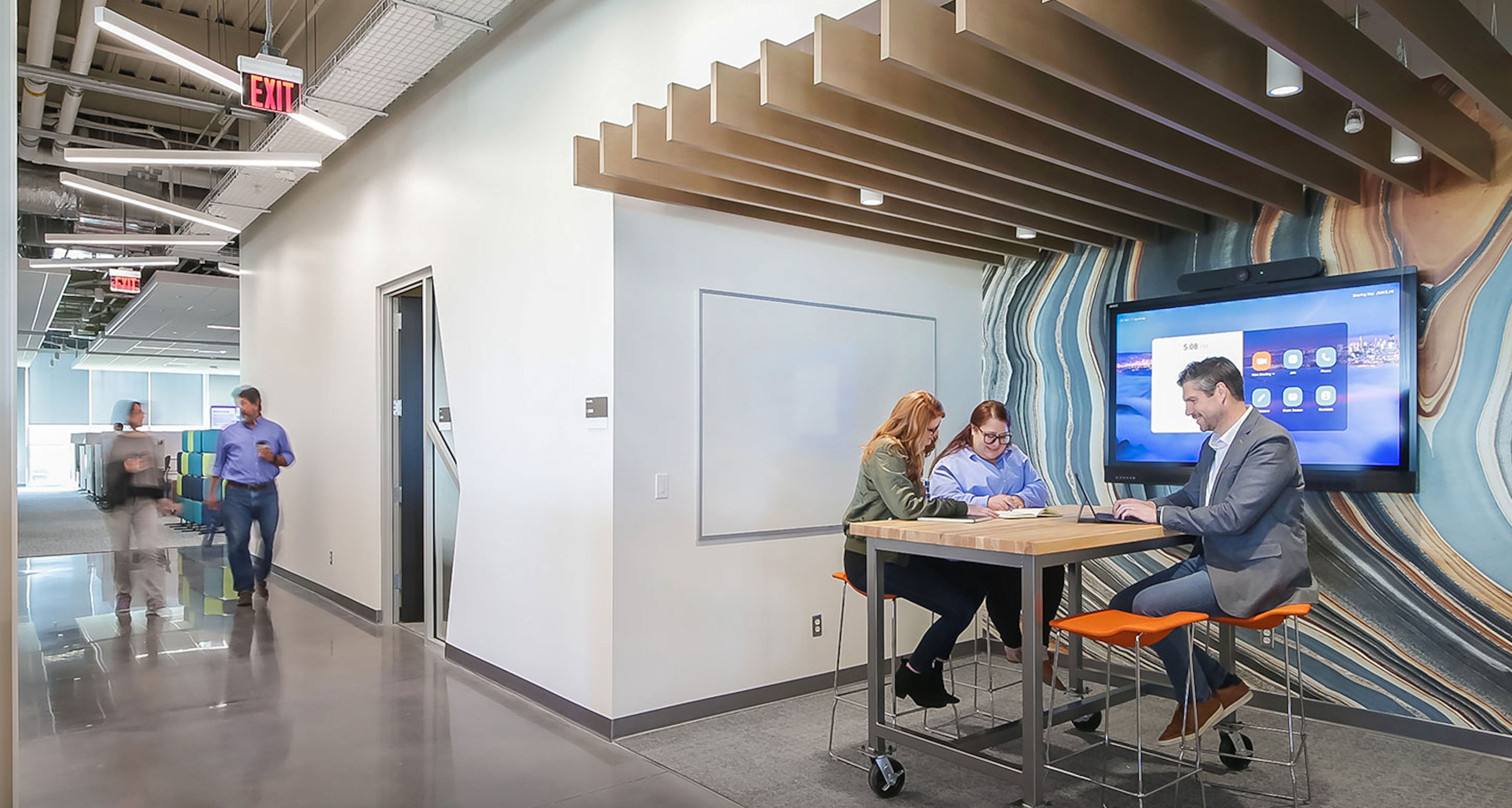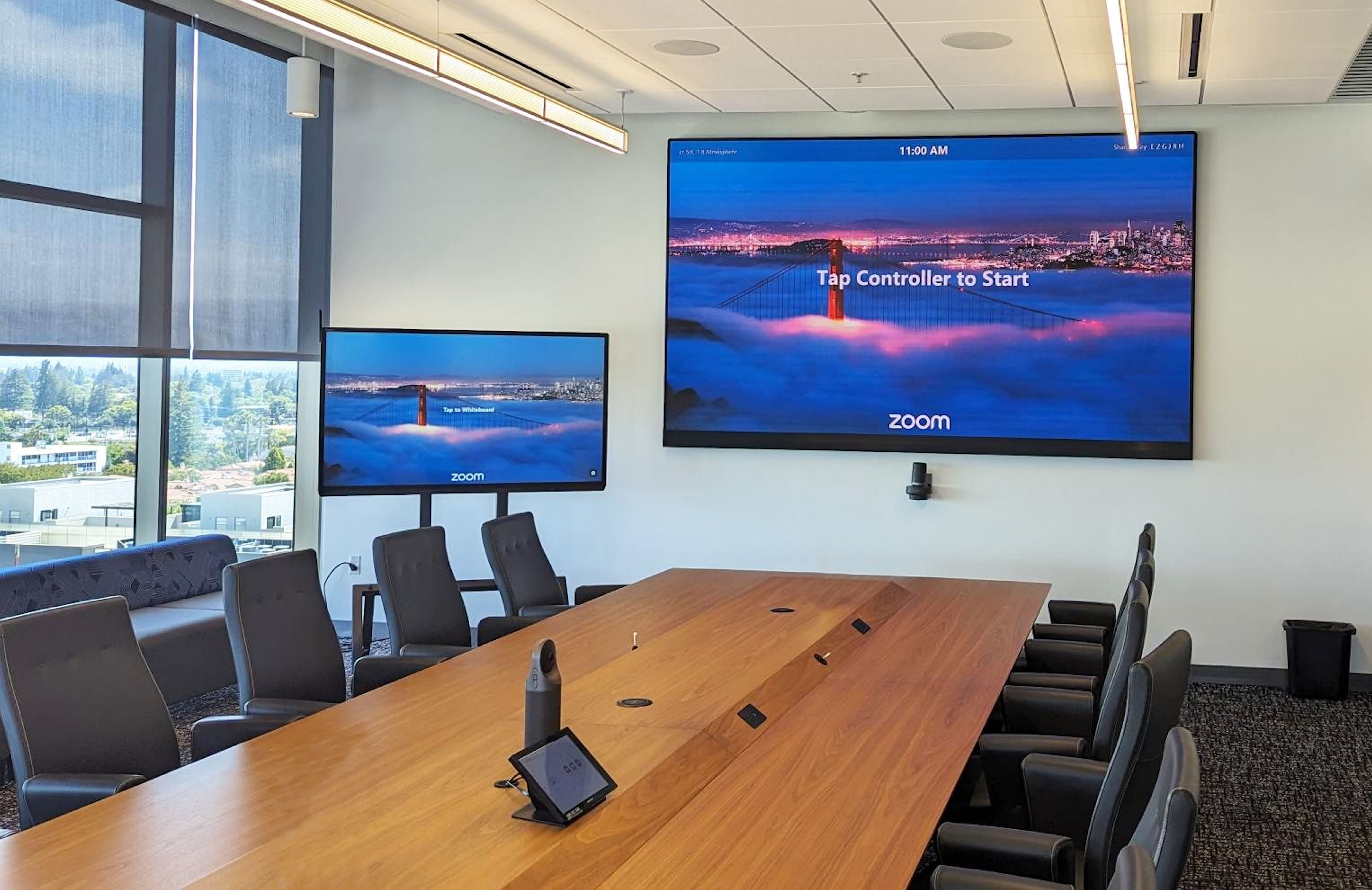Hybrid Work Model Cultivates Inclusion and Increases Business Agility
With 11,000 people globally NetApp needed more interactivity in its meeting rooms and chose displays with touch-capability and BYOD compatibility.

NetApp is known for its cloud-led, data-centric software which empowers organizations to lead with data in the age of accelerated digital transformation. Its systems run applications from data centers to cloud, performing across diverse environments and helping organizations to securely deliver data, services, and applications to the right people—anytime, anywhere.
NetApp employs approximately 11,000 people globally, with around 1,000 of those based at its state-of-the-art headquarters right in the heart of Silicon Valley. The company moved to these premises as part of an ongoing transformation, accelerated by the pandemic, and its future of work strategy.

NetApp operates a flexible, hybrid work model and its office amenities are designed to cultivate inclusion and increase business agility while prioritizing employee health, safety, and wellness. The company has meeting and conference rooms of varying sizes, which both internal staff and customers use for in-person and virtual meetings. Technology is an important tool to help to deliver a first-class collaboration experience, and the internal NetApp Multimedia Group began to look at upgrading its large-format displays as people began to return to the office, post-pandemic.
Bart Saunders, Multimedia specialist at NetApp and Eric Benson, director of Engineering at Creation Networks the AV integrator on the project, organized a “shoot out” to trial a variety of displays on site. One of the key requirements was for full interactivity and touch technology, something that was lacking from the existing displays.
“Team-based work and collaboration are very important to us at NetApp,” Saunders said. “As such, we wanted more interactivity in our meeting rooms, so our chosen displays would need touch screens to help with that, as well as BYOD compatibility so employees could use their personal devices. After weighing up the options we found that the Avocor G Series offered the best touch experience; it was really responsive and had a nice finish on the glass. In fact, the overall device is well designed and looks great. BYOD worked perfectly with staff being able to smoothly join meetings with their own laptops, tablets, and mobile devices. We’ve had no issues, reliability has been superb, and, in truth, our experience has been so positive we’ve settled on Avocor as our go-to standard display for all meeting and conference rooms.”
Following the trial, the new Avocor G Series interactive displays are now installed in many of the conference rooms and smaller huddle spaces at NetApp. “The devices offer excellent support for digital whiteboarding, an activity that is proving increasingly popular amongst our teams since we made the switch to Avocor.” Saunders added.
The G series displays are installed at NetApp in their full range of 65, 75, and 85-inch sizes. These 4K-enabled units feature a sleek, bezel-less edge-to-edge design with bonded, crystal-clear InGlass technology to deliver ultra-fast performance across 20 individual touch points and four passive stylus options. The result is a pixel-perfect, interactive user experience for participants in the room, and meeting equity for those who are joining remotely.
A daily selection of features, industry news, and analysis for tech managers. Sign up below.
NetApp is interested in one of the most talked-about recent trends in display technology, the ultra-wide 21:9 format. “I’m really interested in the new wide-format display Avocor has just launched and the potential it has for displaying and breaking up content in new ways,” Saunders concluded. “I’m really looking forward to seeing how this market segment develops.”
The staff of AV Technology serves the community of decision-makers comprising AV/IT technology managers and directors, instructional technologists, and anyone making or influencing AV/IT technology decisions within their respective facilities and institutions.
